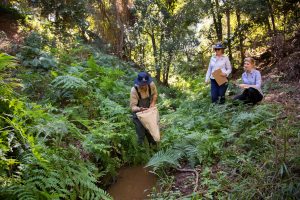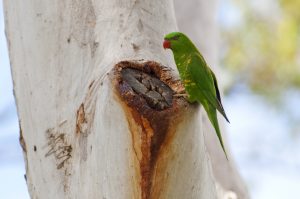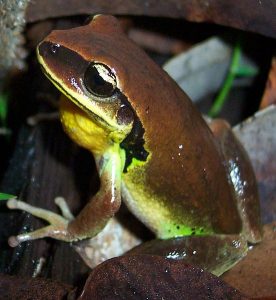Local governments own a large amount of biodiversity and environmental data. Data is frequently collected for waterway management and conservation programs, surveys for development sites, and environmental impact studies, and many other purposes. Brisbane City Council recently completed an assessment of their biodiversity data and selected the ALA as its approved corporate platform for all data collection and storage across all its business units.
Brisbane City Council’s Chairman of Environment, Parks and Sustainability, Cr David McLachlan explains, “After Council researched and trialled various methods of record keeping, our officers found ALA represented the best mix of data collection and collation, share functionality, data analysis – and the fact that access to over 74 million biodiversity records were freely accessible – this all added up to an attractive package impossible for Council to pass up.”

Main benefits of using the ALA
Since 2016, Brisbane City Council has used ALA as its principal source of data and 2017 saw the adoption of the ALA platform for chronicling all the Council’s flora and fauna data.
Brisbane City Council recognises the numerous benefits of using and promoting the ALA including the following:
- Ability to provide authorised wildlife data to the wider community.
- Access to both historic and contemporary data from a broader range of data sources.
- Ability to promote contribution to a national project on the Council’s existing networks.
- By contributing to the analysis of data the ALA aids in ascertaining trends at a regional, state and national level.

“One of greatest benefits to Brisbane City Council in using the ALA platform however, is the ability to manage flora and fauna records, notably; improving the available information on wildlife occurrences within Brisbane – specifically photos, descriptions and information on where our wildlife can be found,” Cr McLachlan explained.
“Other benefits include opportunities for the wider community to be involved with recording wildlife movements across Brisbane while also being able to get involved in a broad range of citizen science programs that help bridge the knowledge gaps of Brisbane’s local (and threatened) species which is where the ALA’s citizen science portal, BioCollect comes into its own. It is greatly appreciated that as a dynamic and community-minded Council, the fact all data is stored on, and accessible by the ALA, is governed under a creative commons licence allowing Council to provide a rich and engaging user experience either directly from the ALA or via the corporate website.”
Brisbane City Council currently promotes these benefits and more – and diligently works with internal program partners to encourage local community and conservation groups to get involved with the myriad of citizen science programs available and even for the groups to create their own under ALA’s BioCollect platform using Brisbane City Council as a program partner.
Brisbane City Council is in the final stages of uploading thousands of contemporary and historic records to ALA (many dating back to the 1970s and 80s). The comprehensive ability for ALA to store and maintain all these records was of paramount importance as there is a great need for an easily accessible, storage facility that can handle the thousands of flora and fauna records collected through the biodiversity and conservation work Council has been, and is involved in.
“The approach by ALA to ensure collection and maintenance of millions of flora and fauna records has meant that not only are local governments and other agencies able to substantially reduce their data collection and management costs but most importantly that there is a single, solitary source of truth for Australian-wide biodiversity data,” Cr McLachlan said.
Brisbane City Council staff training
To encourage use of the ALA tools across Brisbane City Council’s many business areas, the Biodiversity and Conservation Planning team is now in the process of hosting ALA information and training sessions for a number of these areas.
Other Council community initiatives include Greenheart Fairs (sustainability events), and schools and environment centre events. It is envisioned that Council will use the educational resources and classroom activities to broaden the knowledge of students across Brisbane schools and those people in the wider community who have a passion and love of Brisbane’s unique biodiversity to increase their knowledge through citizen science projects.

Council’s Environment Centres encourage their volunteers and community groups to work on developing their own citizen science projects with a theme specific to each centre’s location. For example, a project might involve the endangered Green-thighed frog, which has been known to inhabit the wetter forest areas of Karawatha Forest in Brisbane’s south-east and needs substantial increased surveying for additional populations. Increased frog surveys could be a great possibility for a BioCollect project run by the Environment Centre’s staff and volunteers.
Council foresees a range of other applications for ALA to inform a range of landuse planning and management decisions, specifically ALA’s ability to delineate mappable areas where significant and threatened species occur.
“What makes ALA the foremost national biodiversity database anywhere in Australia is its free, online, user-friendly platform that allows local communities to record flora and fauna sightings that enables local government, and others, to interrogate biodiversity data for future environmental trend analysis and planning processes.”
For more information about how Brisbane City Council uses the Atlas of Living Australia, please visit brisbane.qld.gov.au and search ‘atlas of living’ or phone (07) 3403 8888.
To find out more about the ALA’s data collection, storage and analysis tools, contact ALA’s BioCollect Team Leader, Peter Brenton peter.brenton@csiro.au.